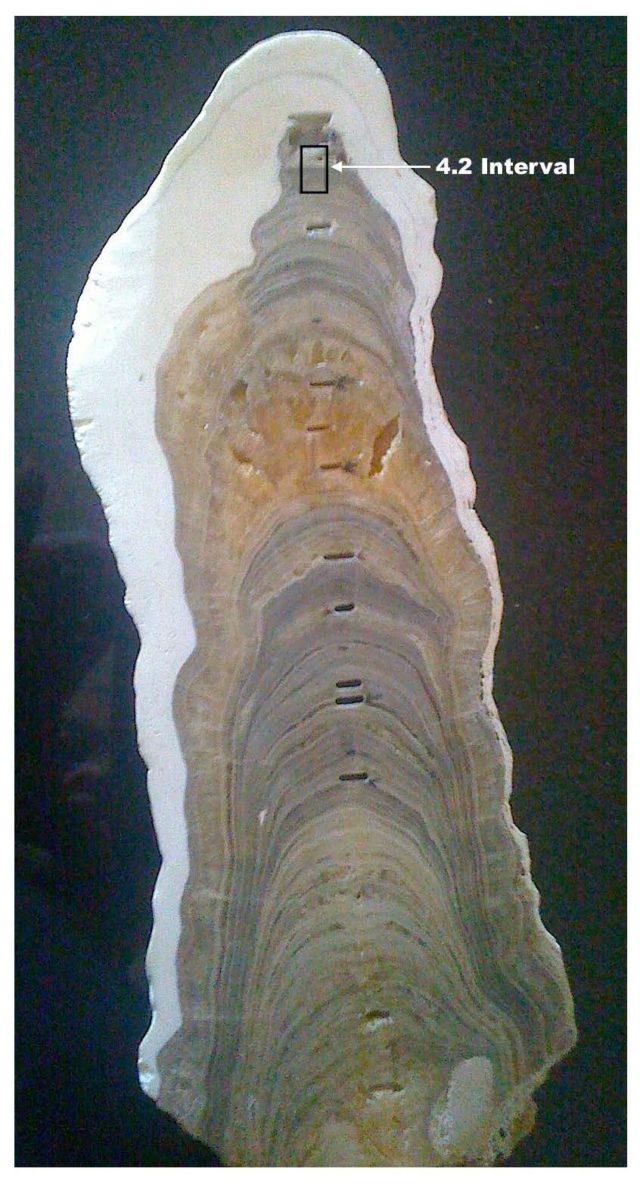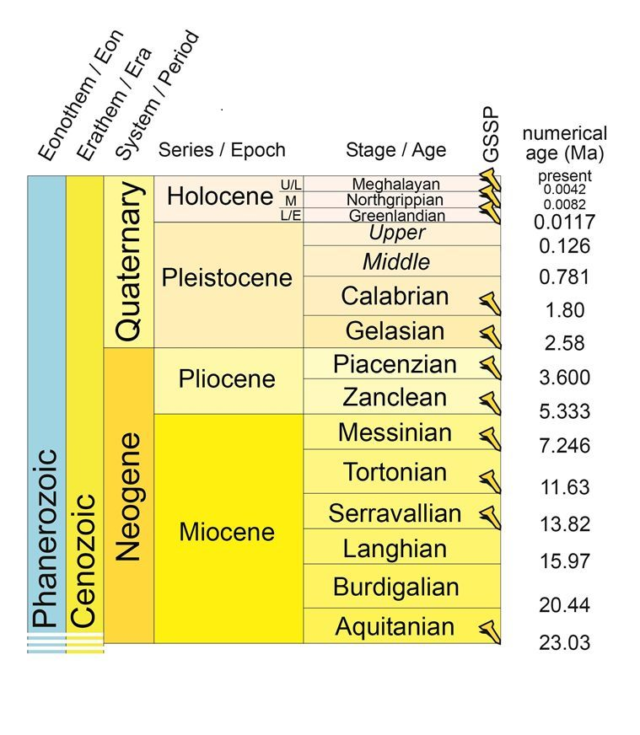PREVIOUS
Meghalayan Age
July 25 , 2018
2460 days
4966
0
- The world has “officially” been in the Meghalayan Stage (or Age) of the Holocene Epoch — the present interglacial period that we live in.
- The Holocene started around 11,700 years ago.
- The Meghalayan Age, which is the most recent subdivision of the Holocene Epoch, began about 4,200 years ago.
- The onset of this age was marked by a mega-drought that crushed a number of civilizations worldwide
- This age was officially ratified as the most recent unit of the Geologic Time Scale.
- The International Commission on Stratigraphy (ICS) has subdivided the Holocene into three phases
Why ‘Meghalayan’?
- The three subdivisions of the Holocene Epoch are marked out by sediments accumulated on sea floors, lake bottoms, glacial ice and in calcite layers in stalactites and stalagmites across the world.
- The three Holocene Epoch subdivisions are
- Greenlandian age
- Northgrippian age
- Meghalayan age
- The oldest phase of the Holocene is known as the Greenlandian. It is the exit of the ice age
- The middle phase of the Holocene will be referred to as the Northgrippian and runs from 8,300 years ago up to the start of the Meghalayan.
- The Meghalayan, the youngest stage, runs from 4,200 years ago to 1950.
- The Meghalayan Stage has been defined at a specific level in a stalagmite in the Mawmluh caves.

- Mawmluh caves are India’s longest and deepest cave located in Cherrapunji, Meghalaya.
International Chronostratigraphic Chart

- The columns in the chart represent, from left, Eon, Era, System/Period, Series/Epoch, and Stage/Age.
- Eons are divided into Eras, Eras into Periods, Periods into Epochs, and Epochs into Ages.
- We are currently in the Holocene Epoch, Meghalayan Age.
- On the far right is the measure of the numerical age of each subdivision of geologic time, in mega-annum, or million years (Ma).
- The Meghalayan Age extends up to .0042 Ma (or 4,200 years) ago, and comes ahead of the Northgrippian and Greenlandian Ages.
- Thereafter, Holocene ends and Pleistocene begins.
- The Cenozoic Era, of which the Neogene and Quarternary Periods are part, has not been shown in full, nor has the Phanerozoic Eon, which is subdivided into the Cenozoic and Mesozoic Eras.
- The full International Chronostratigraphic Chart extends all the way to the beginning of the Pre-Cambrian Eon, approximately 4.6 billion years ago.
- The coloring of the chart follows the Commission for the Geological Map of the World (CGMW).
What is special about the Mawmluh caves stalagmite?
- The Meghalayan Age is unique among the many intervals of the Geologic Time Scale in that its beginning coincides with a cultural event produced by a global climatic event.
International Commission on Stratigraphy
- International Commission on Stratigraphy is the largest and oldest constituent scientific body in the International Union of Geological Sciences (IUGS).
- Its main objective is to precisely define global units of the International Chronostratigraphic Chart.
International Union of Geological Sciences
- The International Union of Geological Sciences (IUGS) is one of the largest and most active non-governmental scientific organizations in the world.
- It was founded in 1961
- IUGS is a member of the International Council of Science.
- IUGS promotes and encourages the study of geological problems, especially those of world-wide significance, and supports and facilitates international and interdisciplinary cooperation in the earth sciences.
- - - - - - - - - - - - - - -
Leave a Reply
Your Comment is awaiting moderation.


